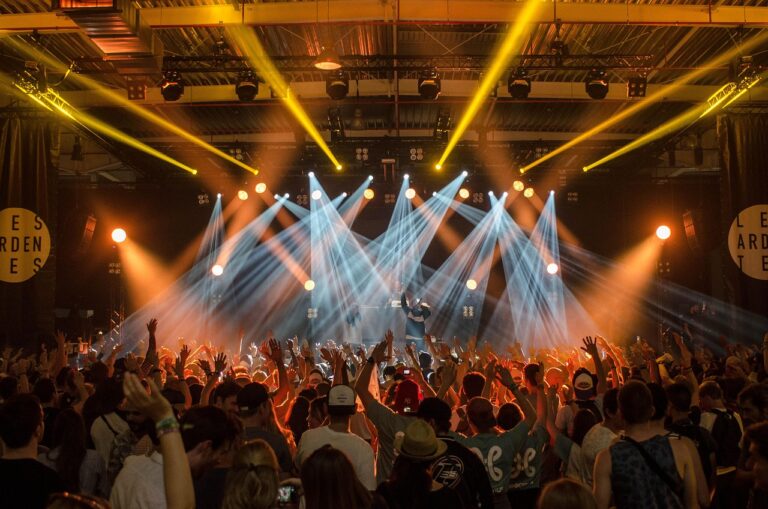Imagine you have 90 seconds to move a four-walled living room, two dozen props, and three actors in a blackout and the next scene’s music cue is fixed. That pressure cooker is where the stage manager lives, translating an entire production plan into precise calls, safety, and repeatable execution night after night.
If you’re trying to understand stage manager duties, here’s the short version: they are the production’s operational center. They convert creative decisions into logistics, enforce time and safety rules, coordinate departments, and call the cues that make the show run as written on schedule and under stress.
The Scope And Authority Of A Stage Manager
Stage manager duties span the full production arc: pre-production planning, rehearsals, technical integration, performances, and post-show reporting. In a typical 6–10 week schedule for a mid-sized play, they may produce 50–100 rehearsal reports, manage notes for 10–20 artists and department heads, and call 200–600 cues per performance (musicals trend higher; straight plays lower). The stage manager is not the director’s assistant; they are the operational owner of how the show is executed once creative choices are set.
Authority varies by company and union contract, but a reliable rule is this: the director’s word governs artistic intent; the stage manager’s word governs how that intent is executed safely and on time. In practice, that means they can stop a rehearsal for safety, deny a prop or fog effect until ventilation is verified, or hold the house if a critical cueing system is offline. On the other hand, they do not change blocking, lines, or music without director approval unless the emergency protocol says otherwise.
The stage manager’s communication map is wide and continuous. Before noon they might confirm smoke alarm isolation with facilities, finalize a quick-change with wardrobe, update a contact sheet from 32 to 34 entries after late casting, and email a rehearsal schedule that balances actor conflicts with set-paint drying times. After the show they compile a daily report noting 7 minutes of late seating due to rain, two mic swaps, a chipped teacup, and a rhythm issue in Scene 6 that needs a brush-up.
Pre-Production And Rehearsal Operations
Pre-production starts with building the paperwork ecosystem. At minimum, good stage manager duties include creating a prompt book (script pages with blocking and cues), calendars, contact sheets, rehearsal schedules, prop and costume tracking sheets, scene change plots, and run sheets. Templates save hours: a prop tracking sheet typically lists scene, page, item, handoff point, performer, preset location, and reset notes; missing any of these fields is a frequent source of show delays.
Scheduling is a constraint-satisfaction problem under rules. In the U.S., Actors’ Equity contracts typically mandate short breaks approximately every hour and a meal break around the 5–6 hour mark; the exact rule depends on the agreement. The stage manager sequences work to maximize productivity without incurring overtime or violating breaks. Example: on a five-hour call with 12 actors and 3 scenes, they may front-load scene work with the largest overlap to avoid paying three actors to wait, then pivot to line-throughs with offstage principals during a scene change install.
Rehearsal documentation is not optional. Every session should yield a rehearsal report within a few hours, recording run times, line notes, injuries and near-misses, changes to blocking or props, and requests by department with deadlines. If Scene 3 just added a live candle, the report will flag flame-watch staffing, extinguishers at wings L2 and R1, and a local fire code check. If the fight captain observed a rushed parry, tomorrow’s schedule includes a 10-minute fight brush-up. Over time, these reports become the audit trail that explains why a choice was made, who approved it, and when it changed.
Technical Rehearsals And Cue Calling
Tech converts artistic decisions into a timed sequence of cues. A common U.S. practice is “10 out of 12” days during tech: two 12-hour days with at least 10 working hours. In this phase, stage manager duties include building a cueing architecture that the show can sustain indefinitely. That means assigning clear labels (LX for lights, SD for sound, PROJ for projection, FX for effects, FLY for fly rail), clustering appropriate standbys (for example, “Standby LX 45 through 49, SD 33, FLY 12”) and choosing precise “go” points (a musical downbeat, a line ending, a footfall).
Good cue calling has a tempo. For a light cue at a line end, a stage manager might issue standbys 15–30 seconds prior, then call “Go” on the final consonant for consistency. For a timecoded musical, cues may auto-fire, but the stage manager still calls back-ups and deck moves to sync with automation. If a show regularly carries 400–800 cues, a well-built prompt book matters: margin coding for cue type, top tabs for scenes, and a quick index for emergency skips save seconds that prevent visible mistakes.
Communication hardware is part of the craft. Most shows use a party-line intercom system with at least two channels one for calling (lights/sound/projection) and one for deck/automation plus page/announce to backstage. The trade-off is noise versus clarity: too many open mics and the caller misses a downbeat; too few and the deck can’t warn that a hinge failed on a wagon. Cue lights reduce chatter for precise holds at fly rails or trap doors. When equipment fails, the contingency is pre-rehearsed: hand signals, backup headsets, and a booklet of “dead com” procedures to finish the act and then hold at intermission.
Performance Maintenance, Safety, And Risk Management
Once open, stage manager duties shift to stability and quality control. They maintain run-of-show paperwork, chair brush-up rehearsals to correct drift, and ensure understudies are performance-ready with put-ins. A practical cadence for a long run is weekly notes for timing and spacing, and fight calls before each performance involving weapons or lifts, typically 10–20 minutes, to re-warm risky sequences at show speed but not show intensity. If the Wednesday matinee ran 6 minutes long due to applause holds, the stage manager confers with the MD and director on whether to accept the variance or tighten transitions.
Safety lives in details and repetition. Deck traffic maps indicate where performers, crew, and scenery can occupy space at any second. A fast change area that works for two actors may become hazardous for four when a quick-change rack and a practical lamp are added. The stage manager signs off presets before each show, checking high-risk items: rigged weapons, harnesses, trap interlocks, and counterweight lines. Any near-miss (a missed spike mark that nearly put a performer under a flown piece) is logged and triggers an immediate correction new spike color, additional “clear” calls, or reprioritized transitions.
When something goes wrong mid-performance, the stage manager’s decision tree is simple but firm: assess danger, stop if risk is present, communicate clearly, resume only when hazards are resolved. Example: a fog machine misfires and blocks sightlines for a critical stair move. The stage manager can hold for 30 seconds if the music allows, or call a cut to blackout and move to a safe light cue while announcing to audience services. The trade-off is show flow versus risk; the rule is that safety wins. Post-show, the incident is documented with cause, corrective action, and owner with a deadline.
Paperwork Mechanics That Save Shows
Crisp paperwork multiplies team efficiency. A run sheet for a two-act play might list each crew track by minute, cue, and position: “Deck L2: 00:12 pre-set red chair SR; 00:23 shift red chair to SL spike green; 00:37 handoff teacup to Actor C at vom SR.” These micro-instructions eliminate guesswork and are essential for onboarding subs. For props, a preset checklist with photos reduces reset errors; one missing sugar bowl may break a scene rhythm far more than audiences expect.
The prompt book is both encyclopedia and black box recorder. A best-practice layout shows the script on the right page and cues on the left, with blocking notations in pencil and cue placements inked after finalization. Every cue includes a label, a trigger, and an action: “LX 57 Go on ‘now’ Fade to 40% warm wash.” When new effects appear late, the stage manager logs an approval chain and doubles rehearsal reps. A show with 500 cues may require 2–3 full cue-review passes before opening to ensure muscle memory forms for complex sequences.
Metrics help steer improvements. Track late seating holds, scene change durations, and microphone swap counts per week. If Act 1 averages 61 minutes with a variance of ±3, a sudden 68 indicates drift that likely traces to two transitions. If a quick-change misses time targets more than 10% of performances, refactor the task: add a dresser, simplify fasteners, or shift an entrance by two measures if music allows. Small data lets the stage manager argue for resources with evidence rather than anecdotes.
Working Across Scales And Genres
Stage manager duties flex by scale. In a 499-seat regional house, the stage manager may also cover production management tasks like vendor deliveries and truck schedules. In a 1,200-seat commercial musical, they often lead a team: one production stage manager, one or two assistant stage managers, and sometimes a deck stage manager. Delegation changes: ASMs run deck tracks and manage backstage traffic; the caller focuses on cue integrity and communication discipline.
Genre matters. Opera often centralizes around the conductor’s tempo: cue calls anchor to baton patterns, not spoken text, and supertitles add an extra department. Dance relies on counts; the prompt book uses 8-count phrasing rather than lines of dialogue. Immersive or site-specific work trades the predictability of a proscenium for audience movement control; the stage manager may coordinate 10–20 docents as much as they call cues. Each genre reshapes risk: in dance, injuries cluster around lifts; in opera, the complexity of sets and costumes increases entanglement hazards.
Budget is a silent constraint. With limited resources, the stage manager chooses where precision pays off most: a single extra wireless mic as a spare may prevent 1–2 show stops per run; a fogger swap can solve a slip hazard that cost five minutes per show. Conversely, over-specifying can bloat prep time with marginal benefit. A practical heuristic is to invest first in repeatability for high-frequency, high-risk tasks; document rare edge cases simply and train people rather than paper.
Conclusion
If you need a quick diagnostic for stage manager duties, use three questions: Is the show safe, is it repeatable, and can it adapt under pressure without losing intent? Build paperwork that people actually use, cue with consistent triggers, protect time and breaks, and capture small data to drive fixes. Do those relentlessly, and your production will run on purpose not on luck.



